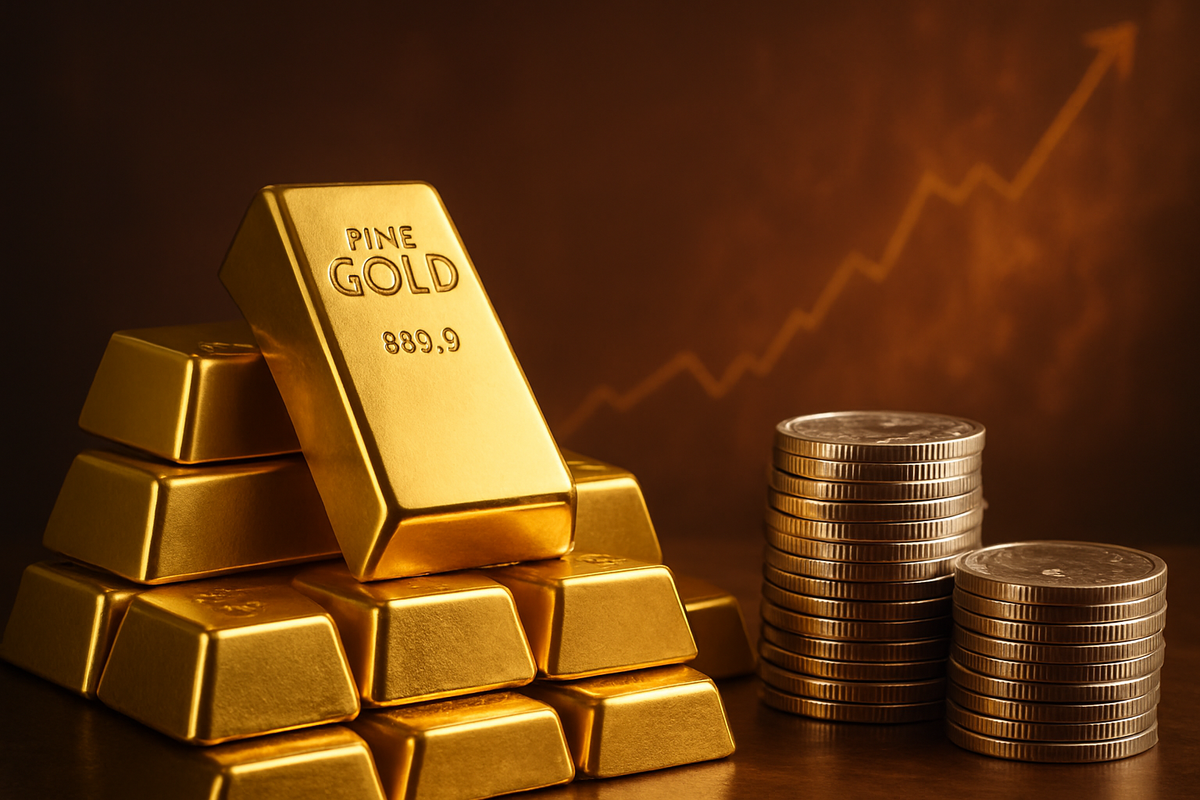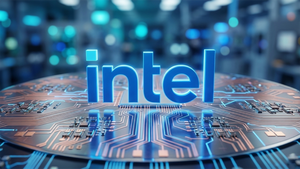
The global financial markets are witnessing a remarkable resurgence in gold and silver prices, as persistent inflationary pressures continue to erode purchasing power and drive investors towards traditional safe-haven assets. As of October 30, 2025, both precious metals have experienced significant rallies throughout the year, with gold surpassing the $4,300 per ounce mark and silver touching $54 per ounce earlier in the month, underscoring their critical role as hedges against economic uncertainty and currency debasement.
This upward trend signals a profound shift in investor sentiment, reflecting deep-seated concerns over the long-term stability of global economies and the effectiveness of current monetary policies. While recent pullbacks have introduced some volatility, market analysts largely view these as healthy corrections within a robust bullish trend, suggesting that the inflationary environment is setting the stage for a prolonged precious metals renaissance.
Unpacking the Rally: A Detailed Look at Gold and Silver's Ascent
The year 2025 has been nothing short of extraordinary for precious metals. Gold prices have demonstrated exceptional strength, with year-to-date gains exceeding 55% by October. The yellow metal reached unprecedented levels, hitting an all-time high of $4,379.96 per ounce on October 16, 2025. Although it has since settled around $3,980-$4,000 per ounce by October 30, this still represents a substantial 45.57% increase compared to the same period last year, trading at 3998.37 USD/t.oz. This mid-October correction, including a sharp intraday drop, was primarily attributed to technical selling and profit-taking after its rapid ascent, rather than a fundamental weakening of its drivers.
Silver has mirrored gold's bullish trajectory, experiencing significant appreciation. As of October 30, 2025, silver traded at 48.77 USD/t.oz, marking a 2.54% increase from the previous day and an impressive 49.29% rise over the last year. The white metal also achieved an all-time high of $54.49 USD/t.oz in October 2025, reaching $54.3775 per ounce on October 16, 2025. From the start of the year through September 30, 2025, silver was up over 61%. Its ascent is fueled by its dual appeal as both a safe-haven asset and its increasing industrial demand, particularly from burgeoning sectors like solar energy projects and electric vehicle production.
The primary catalyst behind this powerful rally is the persistent global inflationary environment. While global CPI inflation has moderated from its late 2022 peak, it continues to run higher than levels seen in the 2010s. The IMF World Economic Outlook (October 2025) projects global average consumer price inflation at 4.2% for 2025, with advanced economies at 2.5% and emerging markets at 5.3%. Factors contributing to this persistence include increased trade protectionism, robust wage growth, low unemployment, and less restrictive fiscal policies. In the United States, headline inflation is projected to accelerate to 3.1% annually by October 2025, with core Personal Consumption Expenditures (PCE) inflation anticipated to climb to an "uncomfortably firm 3.4%" by year-end.
Beyond inflation, several key players and stakeholders are driving this market. Global central banks have been significant purchasers of gold, with approximately 220 tons bought in Q3, a 28% increase from the prior quarter. This sustained demand from official institutions provides a strong structural underpinning for gold prices. Geopolitical uncertainties and trade disputes (especially between the U.S. and China) further enhance gold and silver's appeal as safe havens. Additionally, expectations of easing monetary policies, particularly Federal Reserve rate cuts—such as the recent 25 basis point cut to a 3.75-4.00% target range—weaken the U.S. dollar and lower Treasury yields, thereby decreasing the opportunity cost of holding non-yielding assets like precious metals.
Companies on the Cusp: Winners and Losers in the Precious Metals Boom
The sustained surge in gold and silver prices creates a distinct landscape of winners and losers across various industries. Foremost among the beneficiaries are precious metals mining companies. Companies like Barrick Gold Corp. (NYSE: GOLD), Newmont Corporation (NYSE: NEM), and Agnico Eagle Mines Limited (NYSE: AEM) are poised for significant revenue and profit growth. Higher metal prices directly translate to increased margins on their extracted resources, potentially leading to stronger earnings reports, increased dividends, and expanded exploration budgets. Silver miners, such as Pan American Silver Corp. (NASDAQ: PAAS) and Hecla Mining Company (NYSE: HL), will similarly see their fortunes rise, benefiting from both the investment and industrial demand for silver.
Conversely, some sectors might face headwinds. Jewelry retailers and luxury goods manufacturers could experience mixed effects. While a perception of wealth might boost demand for high-end items, the increased cost of gold and silver as raw materials could squeeze profit margins or necessitate higher retail prices, potentially dampening consumer demand for more price-sensitive segments. Companies like Tiffany & Co. (NYSE: TIF) (now part of LVMH Moët Hennessy Louis Vuitton (EPA: MC)) or Signet Jewelers Limited (NYSE: SIG) will need to carefully manage their inventory costs and pricing strategies.
Furthermore, industries heavily reliant on silver for its industrial applications, such as solar panel manufacturers and electric vehicle (EV) producers, could see their input costs rise. While the demand for these green technologies is robust, a sustained spike in silver prices could impact their overall production costs and, consequently, their profitability. However, many of these companies have long-term supply agreements or hedging strategies in place to mitigate immediate price shocks. For example, major solar panel manufacturers like First Solar, Inc. (NASDAQ: FSLR) and EV giants like Tesla, Inc. (NASDAQ: TSLA) might absorb some of these costs due to strong market demand for their finished products, but continuous price escalation could eventually put pressure on their bottom lines.
The financial sector also plays a crucial role. Exchange-Traded Funds (ETFs) that track gold and silver, such as SPDR Gold Shares (NYSEARCA: GLD) and iShares Silver Trust (NYSEARCA: SLV), are direct beneficiaries, seeing increased investor interest and asset under management. Brokerage firms facilitating precious metals trading will also see increased transaction volumes. However, companies holding large short positions against gold or silver could face significant losses, highlighting the inherent risks in speculative trading within a volatile market.
Wider Significance: An Inflation Hedge in a Shifting Economic Landscape
The current surge in gold and silver prices is not an isolated event but rather a clear signal of deeper macroeconomic shifts and a reinforcement of historical precedents. This rally fits squarely into the broader trend of deglobalization and persistent inflation, a stark contrast to the low-inflation environment of the past few decades. Increased trade protectionism, supply chain reconfigurations, and robust wage growth are contributing to a structurally higher inflation baseline, making traditional inflation hedges like precious metals increasingly attractive. Gold's impressive 85% appreciation between December 2019 and October 2025, significantly outperforming the 23% rise in U.S. CPI over the same period, underscores its effectiveness as an inflation shield.
The ripple effects extend beyond the direct precious metals market. A sustained rally could lead to a reallocation of capital from other asset classes, particularly fixed-income investments, as investors seek assets that retain value in an inflationary environment. This could put further pressure on bond yields and potentially impact equity valuations, especially for companies that are highly sensitive to rising interest rates or input costs. The strengthening of gold and silver as alternative currencies also subtly challenges the dominance of fiat currencies, especially the U.S. dollar, particularly in the context of persistent government debt and fiscal expansion.
Regulatory and policy implications are also noteworthy. If inflationary pressures persist and central banks continue to struggle to bring inflation back to target, there could be increased scrutiny on monetary policy frameworks. Governments might also look at policies to stabilize commodity prices or even consider strategic reserves of critical minerals, including silver, given its industrial importance. Historically, periods of high inflation have often led to increased governmental intervention in markets, and this current environment could see similar responses.
Comparing this to historical precedents, the current situation echoes the inflationary periods of the 1970s and early 2000s, where gold and silver experienced significant bull runs. In the 1970s, a combination of oil shocks, geopolitical instability, and loose monetary policy led to rampant inflation and a dramatic surge in precious metal prices. Similarly, the early 2000s saw gold begin a multi-year rally driven by concerns over currency debasement and geopolitical tensions. While the specific catalysts differ, the underlying theme of precious metals acting as a store of value during times of economic uncertainty and inflationary erosion remains consistent, providing a powerful historical validation for the current market dynamics.
What Comes Next: Navigating the Future of Precious Metals
Looking ahead, the trajectory of gold and silver prices will largely hinge on the evolution of global inflationary pressures and central bank monetary policies. In the short term, continued volatility, characterized by intermittent pullbacks and rapid rebounds, is expected. The recent corrections, which saw both metals enter "oversold" territory, suggest that profit-taking might have run its course, potentially setting the stage for a renewed upward movement. Investors should brace for market reactions to incoming inflation data, central bank announcements, and geopolitical developments. Any further indications of easing monetary policy, particularly from the Federal Reserve, would likely provide additional tailwinds for non-yielding assets.
In the long term, the outlook for precious metals remains firmly positive. Many analysts project gold towards $5,000 per ounce by 2026, with silver also expected to continue its upward trend. The structural drivers of inflation, such as deglobalization and supply chain reconfigurations, are not transient and are likely to sustain higher price levels for the foreseeable future. This creates significant market opportunities for investors seeking to diversify their portfolios and protect wealth against currency devaluation. Precious metals, particularly gold, are increasingly viewed as an "insurance policy" against systemic risks.
Potential strategic pivots for companies involved in the precious metals sector include increased investment in exploration and development to capitalize on higher prices, and a focus on operational efficiency to maximize margins. For industrial users of silver, securing long-term supply contracts or exploring hedging strategies will be crucial to mitigate price volatility. Challenges may emerge if central banks adopt a more aggressive stance against inflation than currently anticipated, potentially leading to stronger dollar and higher real yields, which could temporarily dampen the appeal of precious metals.
Several potential scenarios could unfold. In a "stagflationary" scenario, where high inflation persists alongside sluggish economic growth, gold and silver would likely thrive as investors flock to safe havens. Conversely, a rapid and sustained decline in inflation, coupled with robust economic growth, could temper the rally, though the underlying demand from central banks and industrial uses would likely provide a floor. The most probable outcome, however, appears to be a continued environment of moderate-to-high inflation, supporting a sustained, albeit volatile, bull market for precious metals.
A Golden Horizon: Summarizing the Market's New Reality
The current upward trend in gold and silver prices is a clear and compelling narrative of the market's response to persistent inflationary pressures and a shifting global economic paradigm. The substantial rallies seen in 2025, with both metals hitting historic highs, underscore their enduring role as vital hedges against economic uncertainty, currency debasement, and geopolitical instability. While recent pullbacks have introduced short-term volatility, these are largely viewed as healthy market corrections within a strong underlying bullish trend.
Moving forward, the market is poised for continued focus on inflation data, central bank policy decisions, and geopolitical developments. The sustained demand from global central banks, coupled with increasing industrial applications for silver in green technologies, provides a robust fundamental underpinning for both metals. Gold's track record as an inflation hedge has been unequivocally reaffirmed, making it an indispensable component of a diversified investment portfolio in the current environment.
Investors should watch for key indicators such as changes in inflation expectations, the pace and extent of interest rate adjustments by major central banks, and any significant shifts in geopolitical landscapes. The medium to long-term outlook for gold and silver remains decidedly positive, suggesting that the "golden horizon" is not just a temporary shimmer but a reflection of a new market reality where precious metals play an increasingly prominent role in wealth preservation and growth.
This content is intended for informational purposes only and is not financial advice






